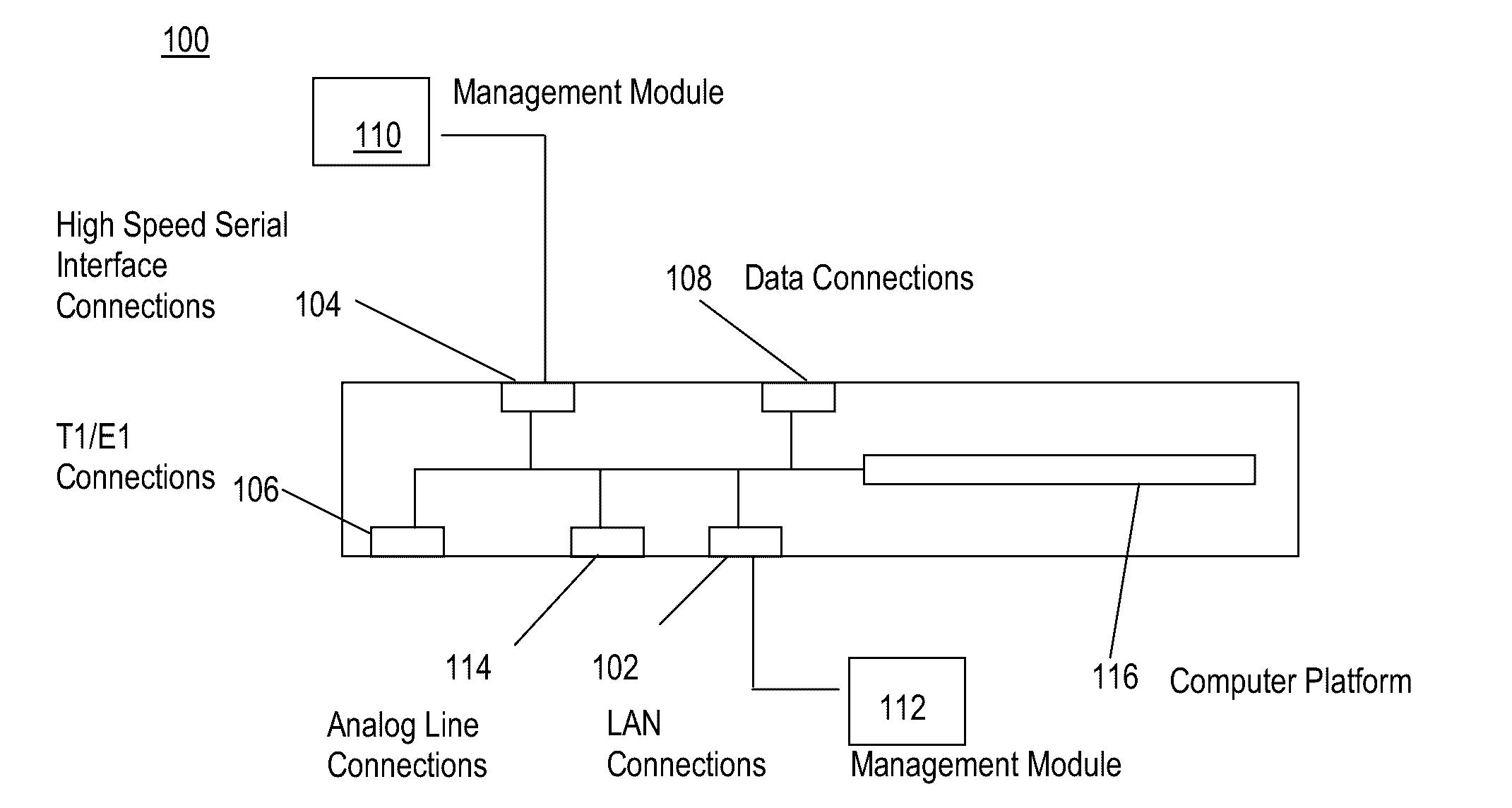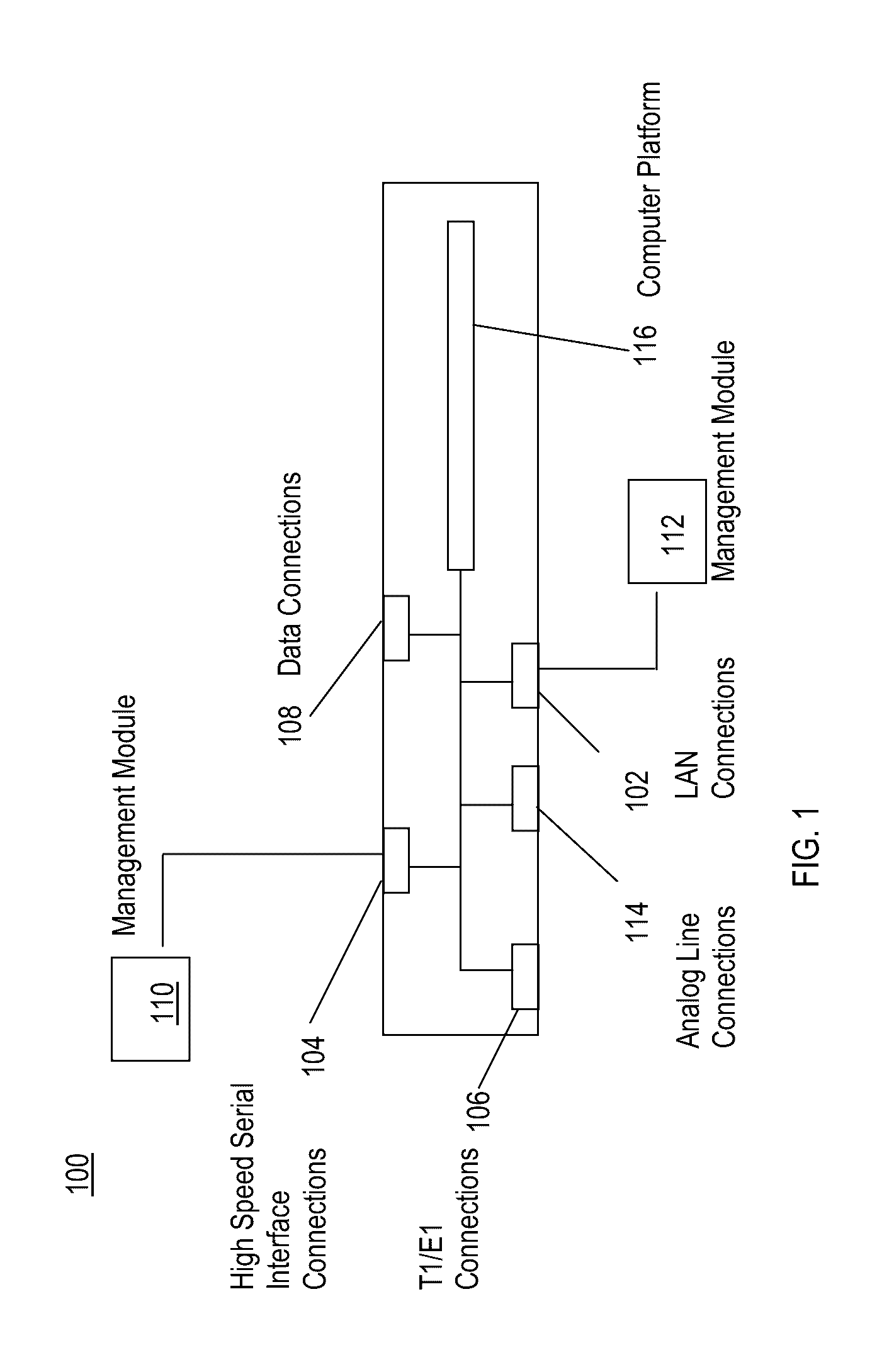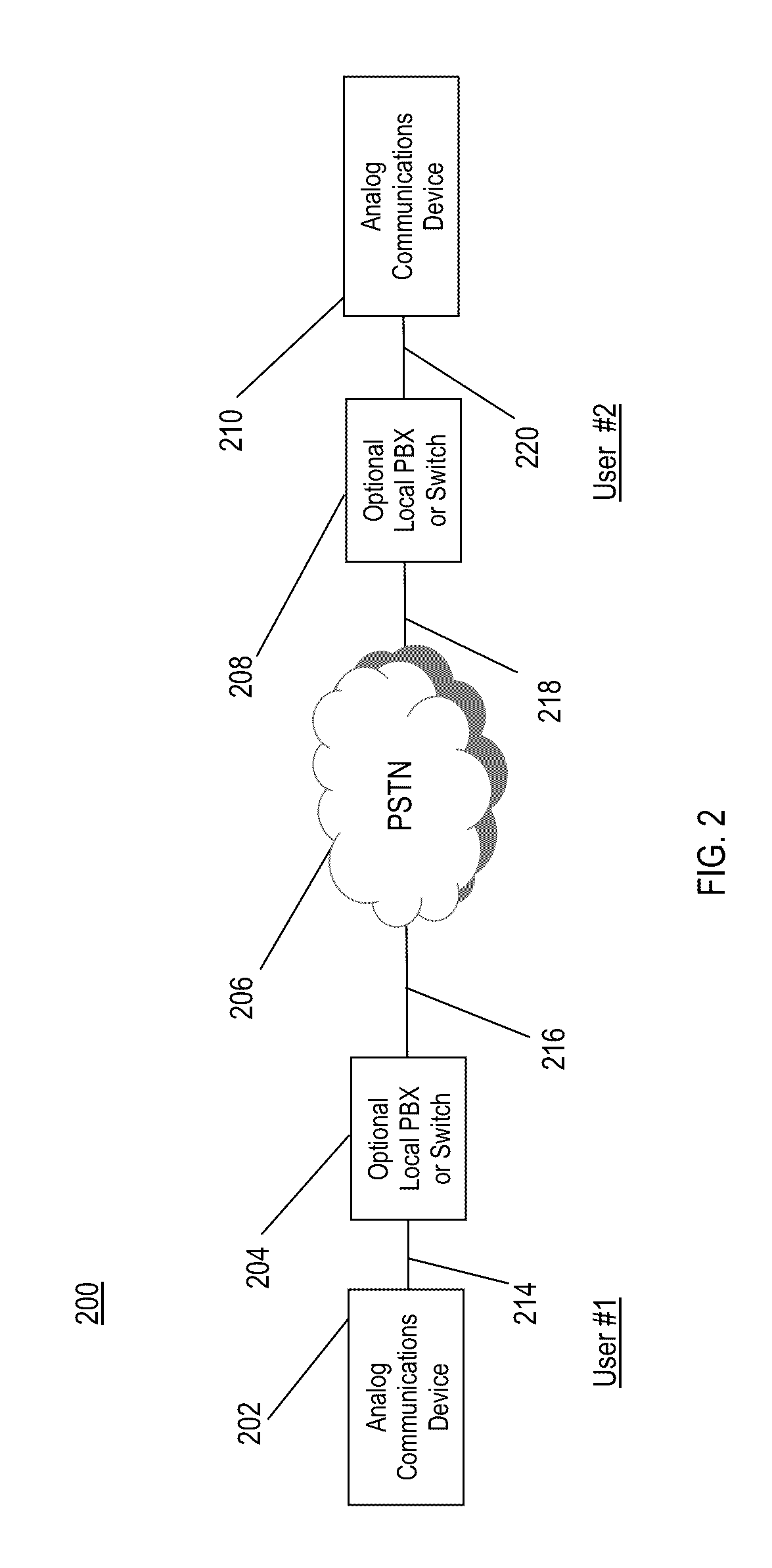System, method, and computer program product for connecting or coupling analog audio communications systems over a wireless packet data network
a technology of analog audio and packet data, applied in the field of transmission of analog audiobased communications, can solve the problems of insufficient standard cell phone quality, insufficient availability and capability, and the current 4g lte data services offered by cellular wireless carriers that do not support cell phone voice traffi
- Summary
- Abstract
- Description
- Claims
- Application Information
AI Technical Summary
Benefits of technology
Problems solved by technology
Method used
Image
Examples
exemplary embodiment 300
[0092]In exemplary embodiments, analog communication may be transmitted from the analog communications device 202 circuits of exemplary network 214, across link 312 to exemplary device 100a. Here, in exemplary device 100a the analog transmission may be digitized and accumulated, processed according to the current invention and transmitted over network links 304 and 306 to the second exemplary device 100b. Symbols received by the second exemplary device 100b may be converted into analog audio for transmission to the exemplary analog communications device 210 over networks 318 and 220 of telecommunications system 308. In exemplary embodiment 300, the link 318 between exemplary device 100b and the telecommunications system 308, may be a digital T1 / E1 connection capable of supporting multiple simultaneous calls, or a single analog connection, which persons skilled in the art will recognize as being functionally equivalent for the current purpose.
[0093]In exemplary embodiments, analog co...
exemplary embodiment 500
[0095]FIG. 5 illustrates an alternative exemplary embodiment 500 of analog communication over a wireless packet based data network connecting to or coupling with the PSTN in accordance with the present invention. Environment 500 includes the foregoing telecommunication system 308 connected to or coupled through the PTSN 206 to exemplary device 100b.
[0096]In an exemplary embodiment, a connection or coupling may exist between the exemplary devices, 100a and 100b and the analog communications devices 202 and 210, which may employ any known telecommunications link. In an exemplary embodiment, link 502 and link 510 may each be either a single analog line or a TDM based trunk type, such as T1 or E1, and each of 502 and 510 may be across any combination of telecommunications equipment.
exemplary embodiment 600
[0097]FIG. 6 illustrates an alternative exemplary embodiment 600 of analog communication over a wireless packet based data network connecting to or coupling with a VoIP communications device. Environment 600 includes the foregoing telecommunication system 302 connected to or coupled through exemplary devices 100d and 100c to a VoIP communications device 620 which may be connected to exemplary device 100c through a VoIP switch or gateway 606.
[0098]In an exemplary embodiment, a connection or coupling may exist between the exemplary device 100c and the VoIP communications device 620, which may employ any known telecommunications link. In an exemplary embodiment, link 610 may be either a single analog line or a TDM based trunk type, such as T1 or E1, or any type of IP connection. In an exemplary embodiment, links 618610, and 502 may be across any combination of telecommunications equipment.
[0099]As understood by skilled persons, networks 306, 610 and 618 may also represent portions of t...
PUM
 Login to view more
Login to view more Abstract
Description
Claims
Application Information
 Login to view more
Login to view more - R&D Engineer
- R&D Manager
- IP Professional
- Industry Leading Data Capabilities
- Powerful AI technology
- Patent DNA Extraction
Browse by: Latest US Patents, China's latest patents, Technical Efficacy Thesaurus, Application Domain, Technology Topic.
© 2024 PatSnap. All rights reserved.Legal|Privacy policy|Modern Slavery Act Transparency Statement|Sitemap



